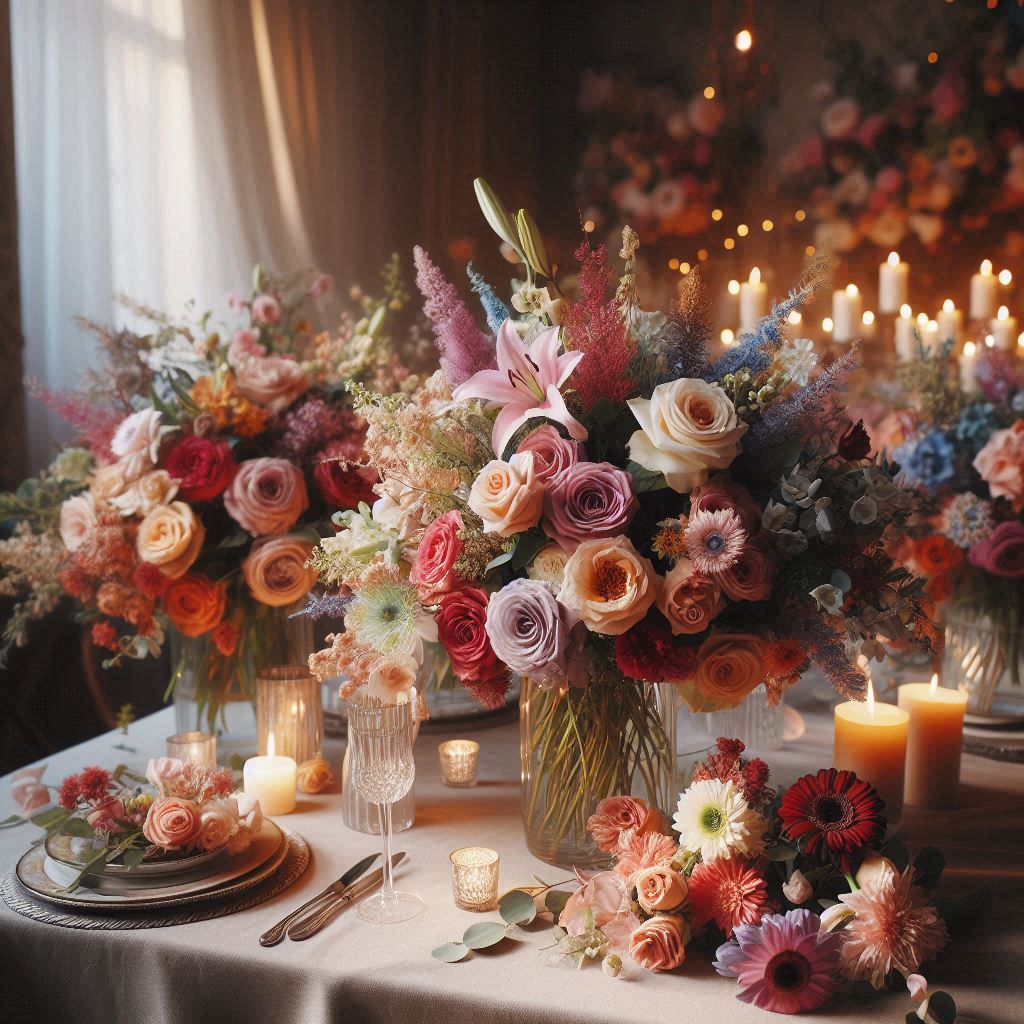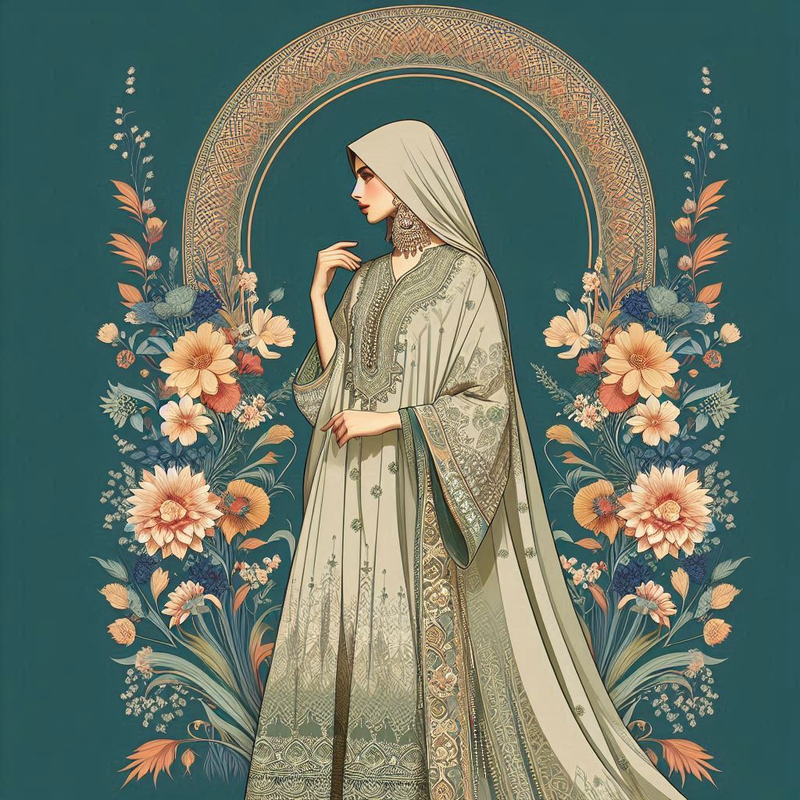What is a Farshi Shalwar?
What is a Farshi Shalwar? | History, Styling & Where to Buy
What is a Farshi Shalwar, and Why Has It Become So Popular Lately?
Fashion trends often come full circle, and one traditional outfit making a grand return is the Farshi Shalwar. With its regal drape and timeless elegance, this floor-touching, wide-legged shalwar has been gaining attention in contemporary South Asian fashion.
But what exactly is a Farshi Shalwar, and why has it suddenly become so popular again? Let’s explore its origins, evolution, and modern-day revival.
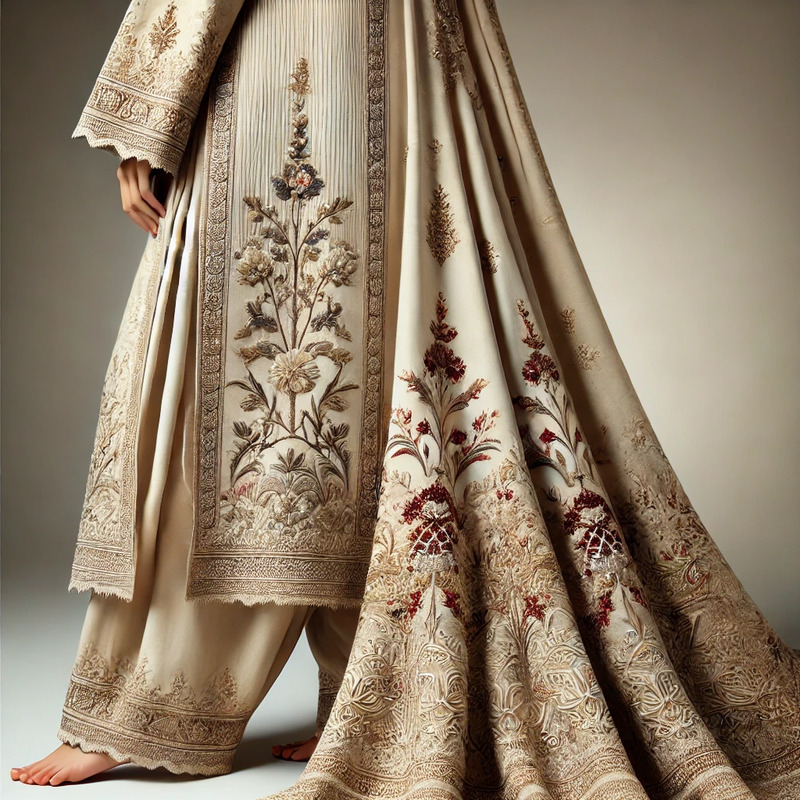 Farshi Shalwar
Farshi ShalwarWhat is a Farshi Shalwar?
The Farshi Shalwar is a traditional South Asian outfit, known for its graceful draping, extra fabric for movement, and a broad, detailed paincha (hemline). Unlike regular shalwars, the Farshi Shalwar has a flowing structure, making it a symbol of heritage and elegance.
Once a common choice for formal and cultural wear, it is now gaining renewed interest among fashion enthusiasts who appreciate its historical charm and versatility.
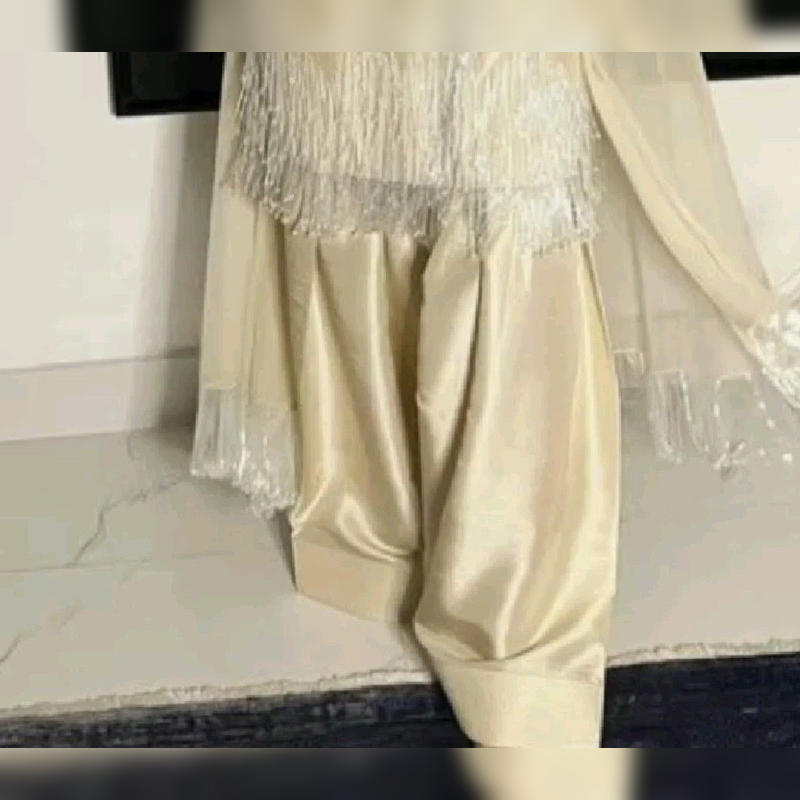 Farshi Shalwar Short Shirt
Farshi Shalwar Short Shirt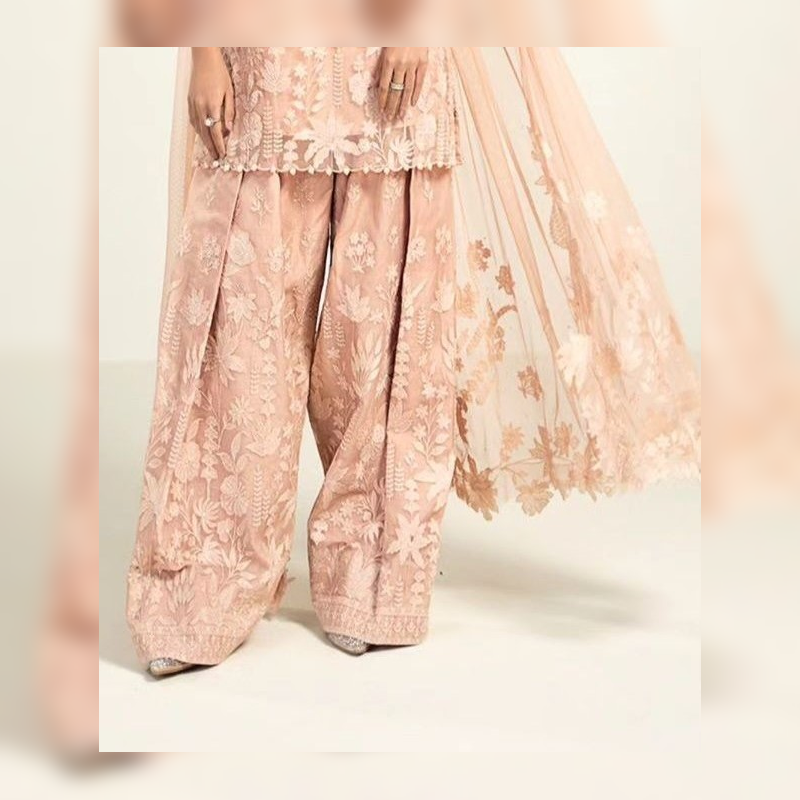 Farshi Shalwar Embossed Fabric
Farshi Shalwar Embossed Fabric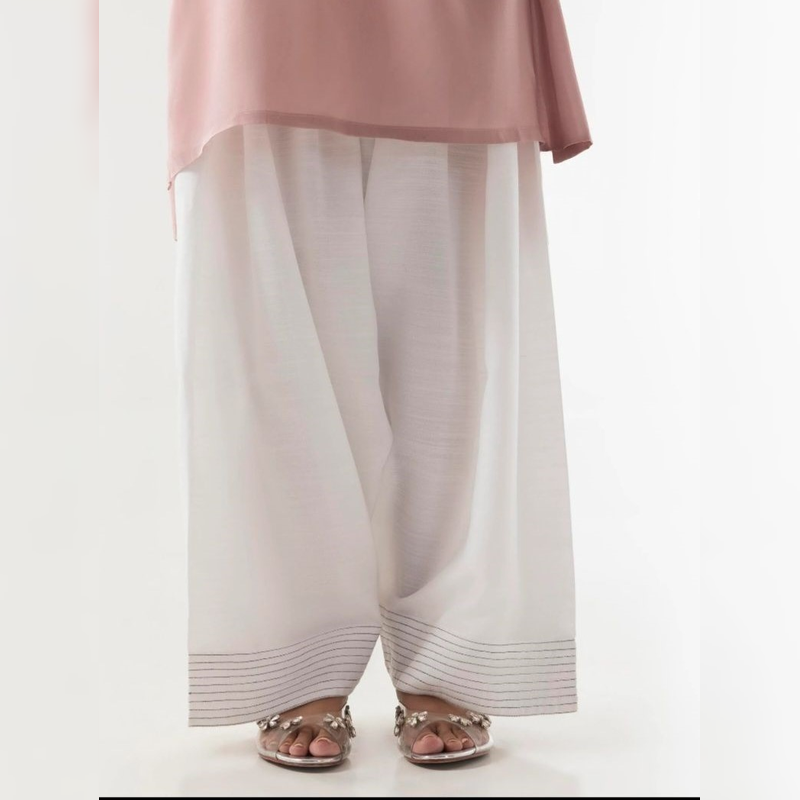 Farshi Shalwar Short Shirt
Farshi Shalwar Short ShirtWhat is a Farshi Shalwar? Why Has it Become So Popular Again?
The Nostalgia Factor
South Asian fashion is currently experiencing a nostalgic revival, with designers and fashion enthusiasts rediscovering forgotten traditional styles. Just like the resurgence of Angrakhas, Ghararas, and long Anarkali dresses, the Farshi Shalwar is being embraced for its vintage charm. These type of shalwars were popular in the 1970's and 80's also.
Inspired by the designer uniforms of the PIA Air Hostesses, the trend had restarted after a break from the 1940's and 60's.
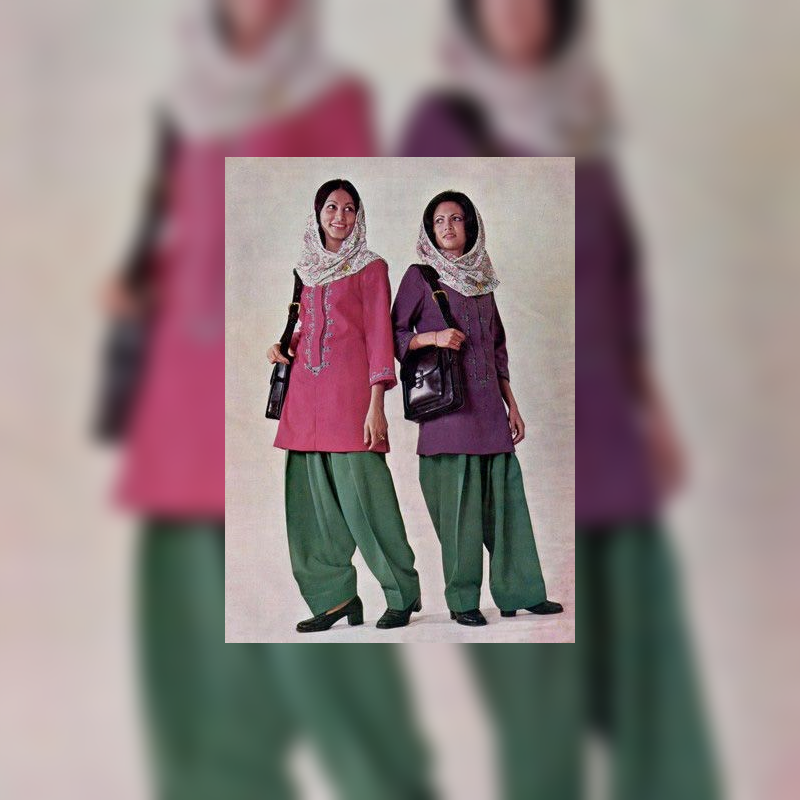 Farshi Shalwar Short Shirt-PIA Uniform Inspired
Farshi Shalwar Short Shirt-PIA Uniform Inspired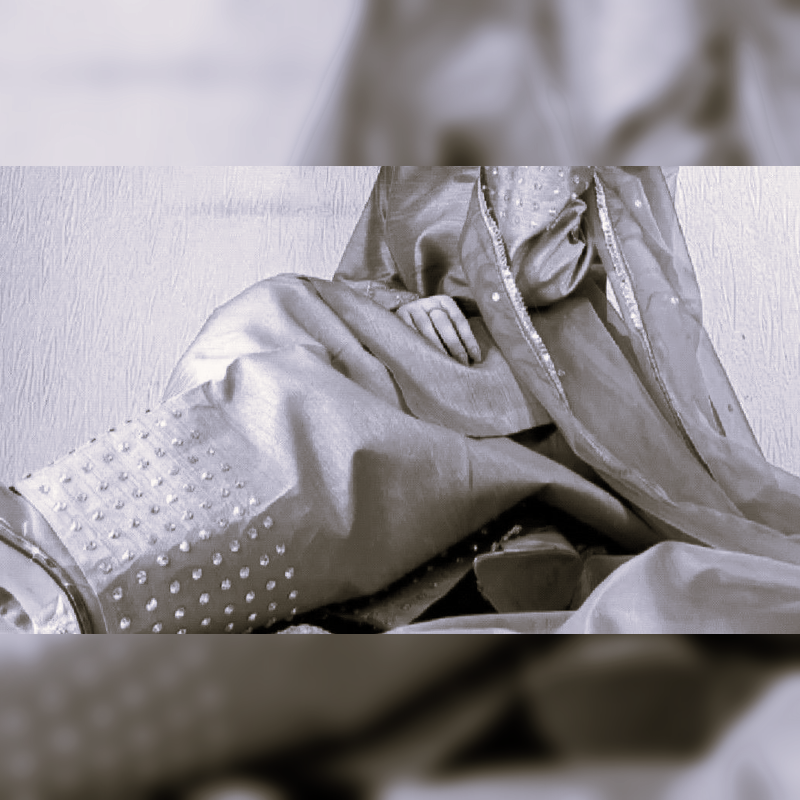 Farshi Shalwar Suit in the 70s & 80s
Farshi Shalwar Suit in the 70s & 80s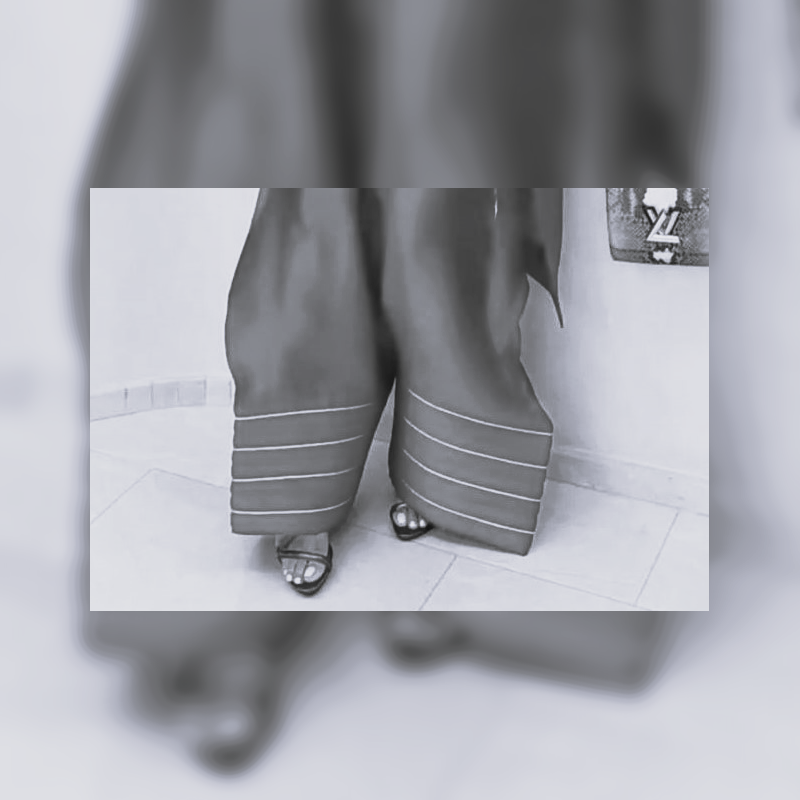 Farshi Shalwar in the 70s & 80s
Farshi Shalwar in the 70s & 80sInfluence of Celebrities and Designers
Many leading Pakistani and Indian designers have incorporated Farshi Shalwars into their couture collections. Several high-end Brands have reintroduced the style with modern tweaks, making it more wearable.
Pakistan's celebrities and influencers have also been spotted wearing Farshi Shalwars, further fueling its popularity.
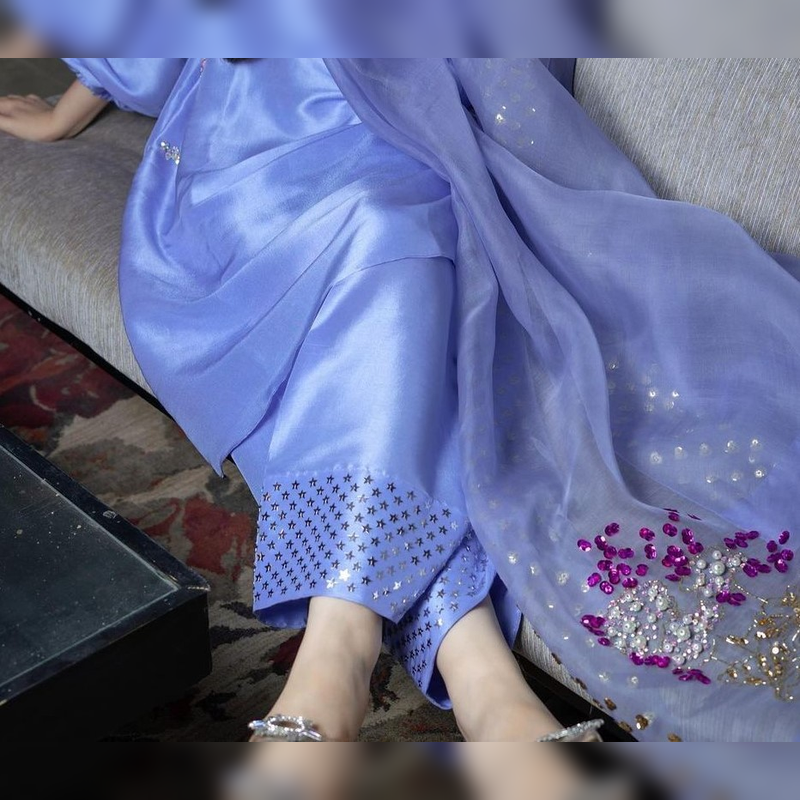 Farshi Shalwar-Influencers & Designers
Farshi Shalwar-Influencers & Designers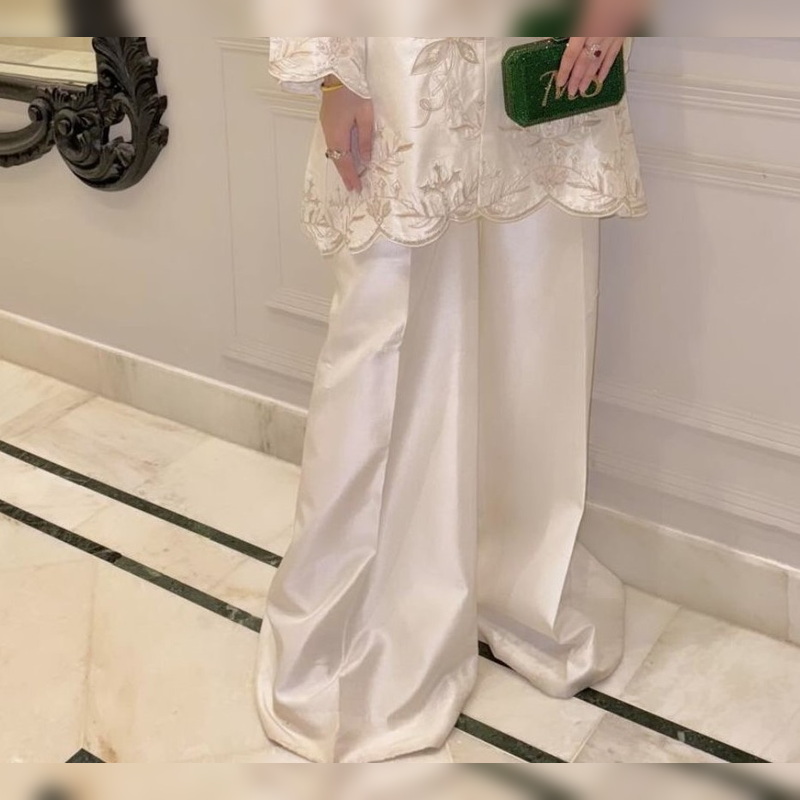 Farshi Shalwar-Influencers & Designers
Farshi Shalwar-Influencers & Designers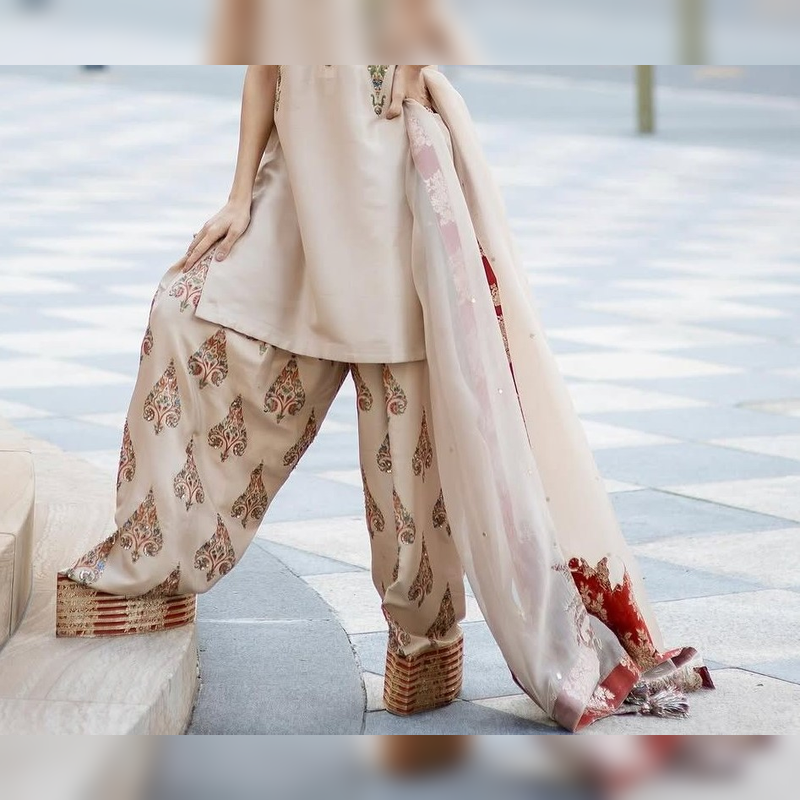 Farshi Shalwar-Influencers & Designers
Farshi Shalwar-Influencers & DesignersBridal and Festive Fashion Trends
Bridal fashion has always been about grandeur, and the Farshi Shalwar perfectly fits the aesthetic of modern bridal couture. Many brides today prefer this regal, floor-touching silhouette over typical lehengas, as it offers a unique vintage appeal while being practical and comfortable.
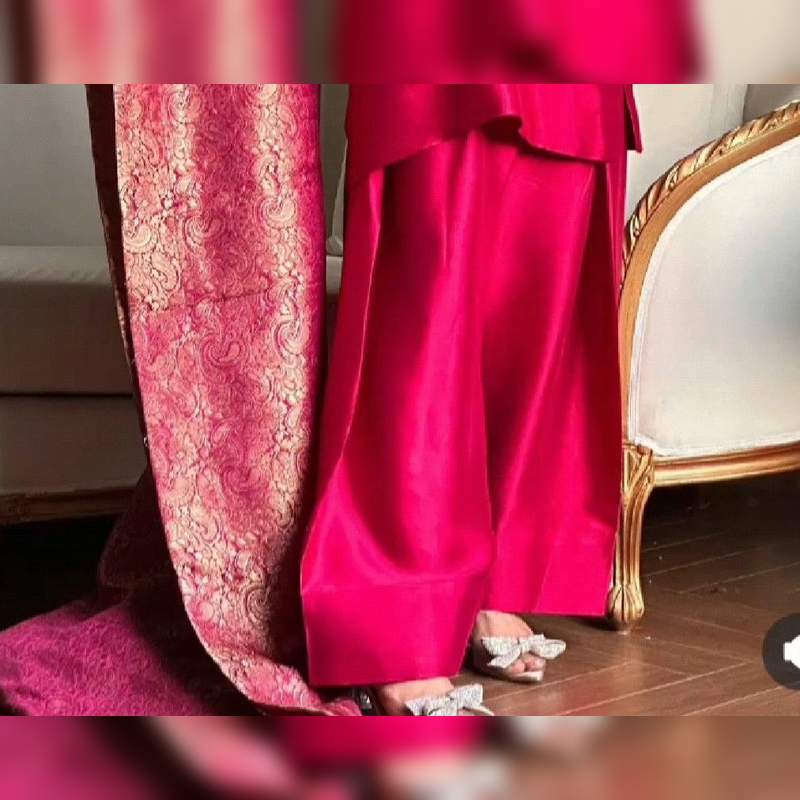 Farshi Shalwar-Bridal & Festive
Farshi Shalwar-Bridal & Festive Farshi Shalwar-Bridal & Festive
Farshi Shalwar-Bridal & Festive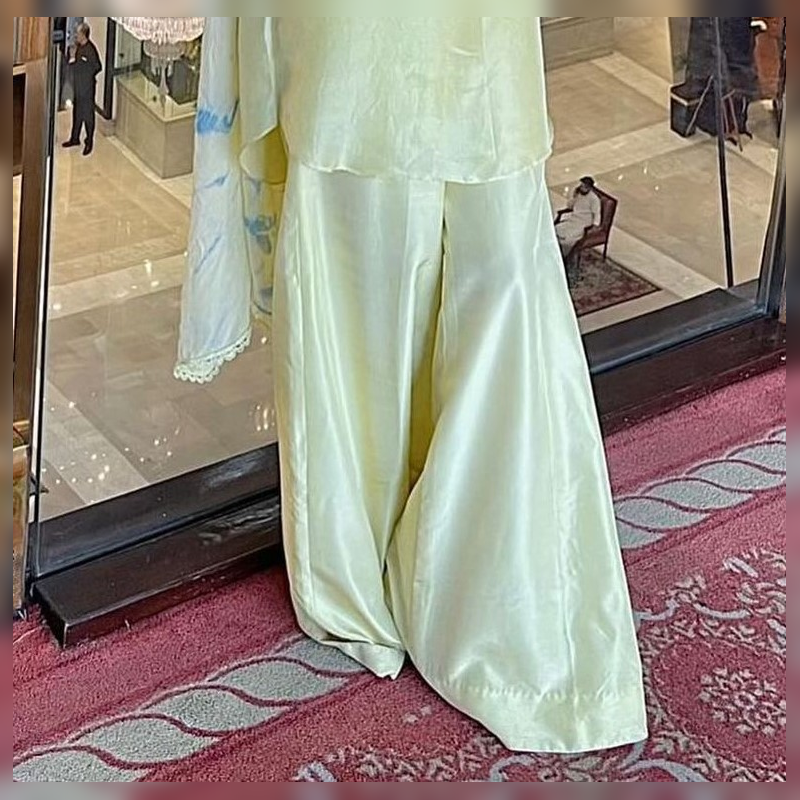 Farshi Shalwar-Bridal & Festive
Farshi Shalwar-Bridal & Festive4. Fusion of Old and New Styles
Modern designers have started experimenting with lighter fabrics, digital prints, and minimal embroidery to create a more contemporary version of the Farshi Shalwar. Instead of heavy brocades, we now see versions in organza, chiffon, and georgette, making it more practical for everyday fashion.
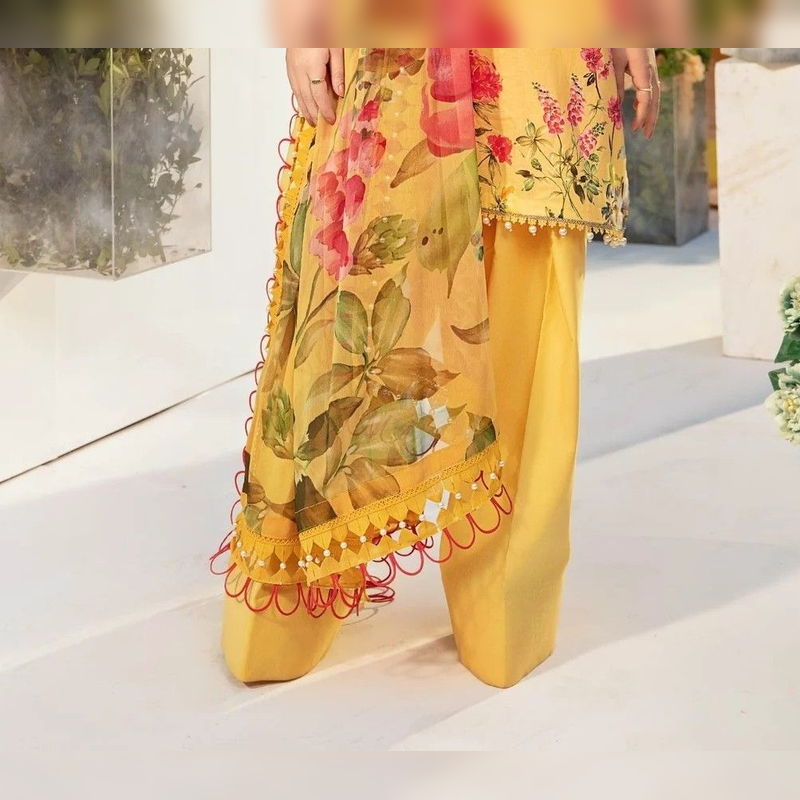 Farshi Shalwar-Fusion & Casual
Farshi Shalwar-Fusion & Casual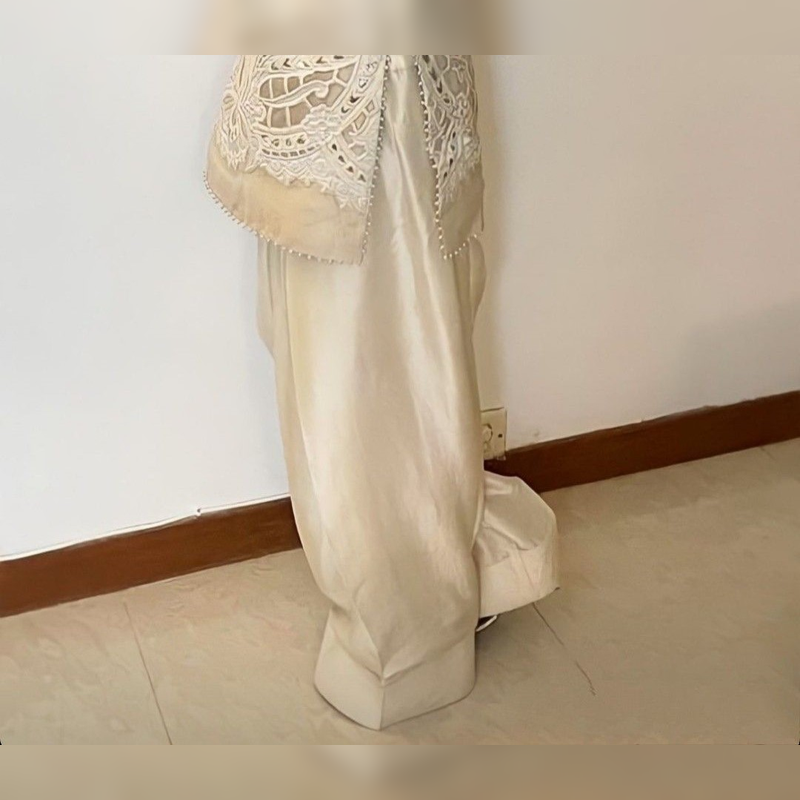 Farshi Shalwar-Fusion & Casual
Farshi Shalwar-Fusion & Casual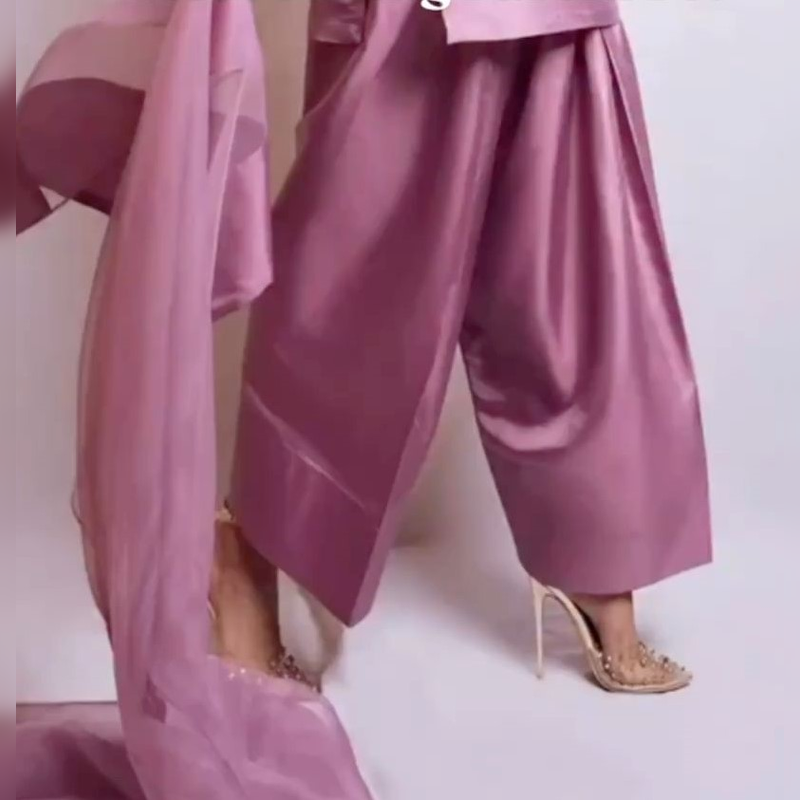 Farshi Shalwar-Fusion & Casual
Farshi Shalwar-Fusion & CasualWhat is a Farshi Shalwar? Origins & Evolution
Unlike the Farshi Gharara, which is linked to Mughal court fashion, the Farshi Shalwar has deeper roots in Punjabi and pre-Partition South Asian culture as well as the Mughal Era.
Shalwars have long been a staple in Punjab, worn by both men and women as a part of daily and ceremonial attire. The Farshi Shalwar likely evolved from earlier styles of wide-legged shalwars worn in the region. Before the 1947 Partition, this style was common among the elite and middle-class women across Punjab and other northern regions of the sub-continent.
It was often crafted using rich silks, jamawar, and brocades, especially for weddings and formal gatherings. However, as fashion modernized, this extravagant style faded, giving way to more practical, narrow-bottomed shalwars and trousers.
The Farshi Shalwar dates back to pre-partition South Asia, particularly in regions like Punjab, Sindh, and parts of North India. It was popular in elite and royal households, often worn with rich fabrics and intricate embroidery. It came back into style in the 1980's.
Over time, as fashion evolved, the Farshi Shalwar became less common in everyday wear, replaced by simpler shalwars, pants, culottes, palazzos, et al. However, its timeless appeal has led to a revival in cultural and formal fashion.
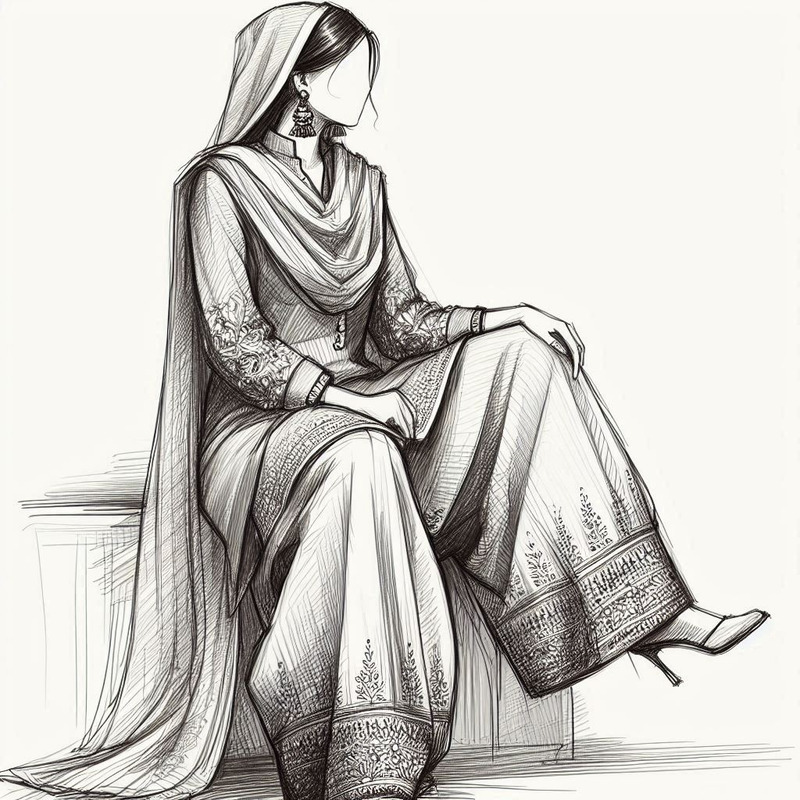 Farshi Shalwar-Origins & Evolution
Farshi Shalwar-Origins & Evolution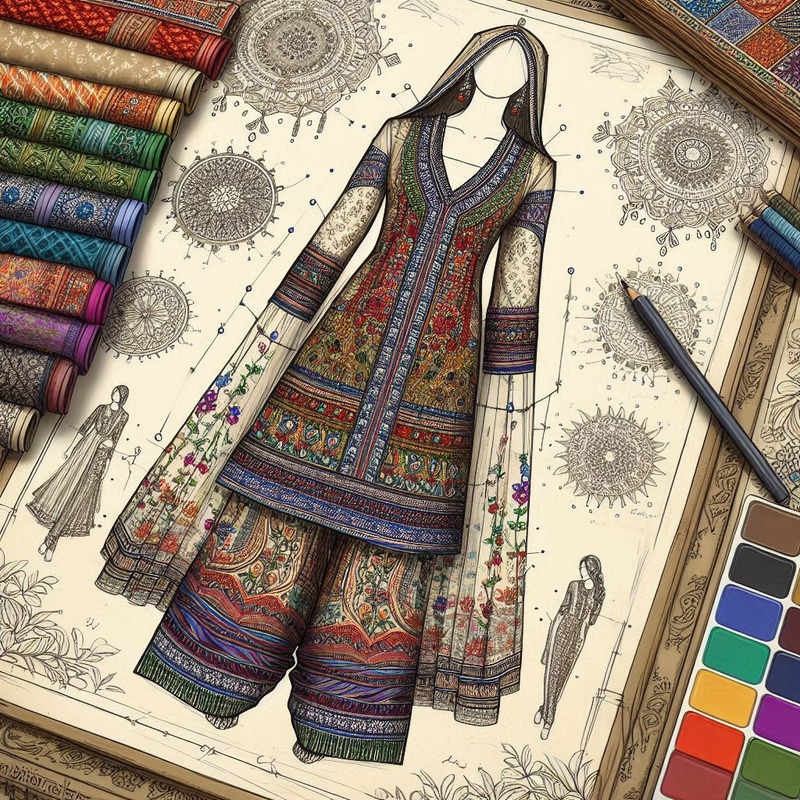 Farshi Shalwar-Origins & Evolution
Farshi Shalwar-Origins & Evolution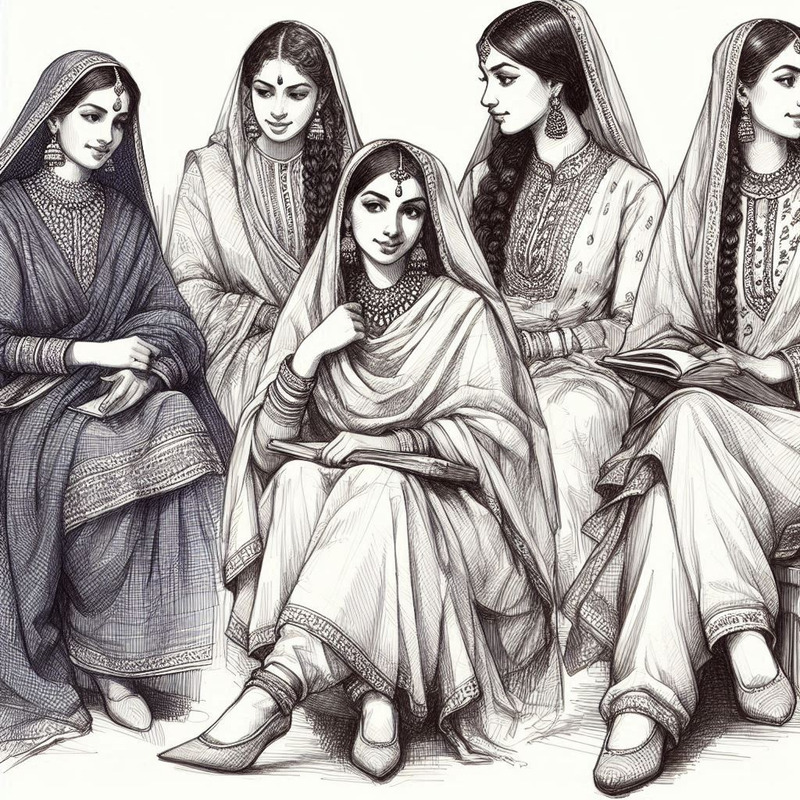 Farshi Shalwar-Origins & Evolution
Farshi Shalwar-Origins & EvolutionWhat is a Farshi Shalwar? Defining Features of a Farshi Shalwar
A Farshi Shalwar is a traditional South Asian lower garment, characterized by its wide, flowing, and floor-grazing silhouette. Unlike regular shalwars, which are tapered at the ankles, the Farshi Shalwar extends outward, pooling gracefully at the floor. This makes it resemble a lehenga or skirt, but with the comfort and structure of a shalwar.
Key Features of a Farshi Shalwar:
✔ Wide-Legged – Much broader than typical shalwars, giving a royal flow
✔ Pleated
and Draped Design – Allows the fabric to cascade elegantly to the floor
✔ Paired
with a Long Kameez or with a Short Kameez – Traditionally worn with heavily embroidered or
structured tops
✔ Floor-Length
Hemline – Unlike regular shalwars that taper at the ankles, this pools onto
the floor - around three inches longer than the usual shalwar.
This style was historically associated with aristocratic and elite women due to its opulent, fabric-heavy design. Today, however, it is making a comeback in modern fashion circles.
✅ Fabric Choices
- Cotton & Lawn – Light and breathable for casual wear.
- Silk, Velvet & Brocade – Luxurious options for formal occasions.
- Chiffon & Organza – Sheer fabrics that enhance the drape.
✅ Draping & Structure
- A traditional shalwar with added fabric for movement.
- Broad paincha (hemline) that widens gradually.
- Typically worn with a shorter kameez to balance proportions.
✅ Embroidery & Design Details
- Machine embroidery for everyday wear.
- Hand embroidery (zari, gota, aari work) for festive attire.
- Applique details on the paincha to add structure and elegance.
What is a Farshi Shalwar? How to Style a Farshi
Shalwar Today?
If you’re looking to embrace the Farshi Shalwar trend, here are a few stylish ways to wear it:
1. Traditional Look
⭐ Pair a
heavily embroidered short kameez with a silk or brocade Farshi Shalwar
⭐ Add a dupatta
with intricate embellishments for a formal look
⭐ Wear
traditional kundan or polki jewelry for an elegant finish
2. Modern Minimalist Look
⭐ Choose a
monochrome Farshi Shalwar set in pastel or neutral tones
⭐ Pair
with statement earrings and a sleek bun
⭐ Opt for lightweight
fabrics like chiffon or georgette
3. Pak-Western Fusion
⭐ Pair a Farshi
Shalwar with a crop top or peplum blouse for a contemporary twist
⭐ Wear block
heels for added height or traditional khussas for style and elegance
⭐ Keep the
accessories minimal to balance the elaborate bottom
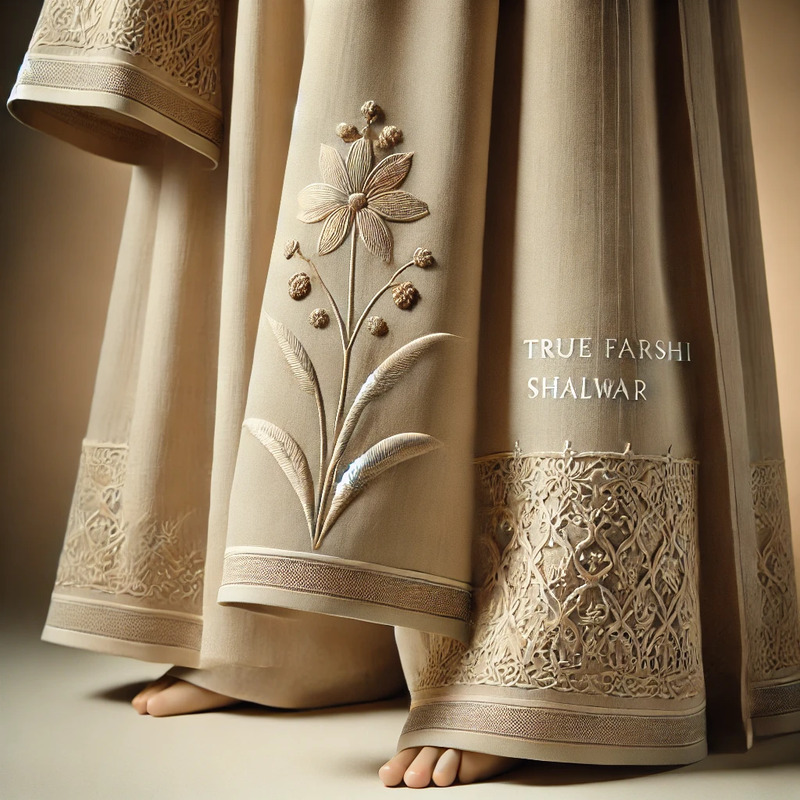 Farshi Shalwar-Styling
Farshi Shalwar-Styling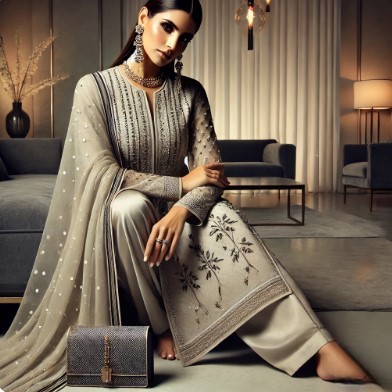 Farshi Shalwar-Styling
Farshi Shalwar-Styling Farshi Shalwar-Styling
Farshi Shalwar-StylingWhat is a Farshi Shalwar? Modern Revival & Styling
Fashion designers and enthusiasts are rediscovering the beauty of the Farshi Shalwar. Today, it can be styled in various ways:
👗 Traditional Look – Paired with a short embroidered kameez and a light dupatta for an authentic South Asian aesthetic.
👗 Minimalist Approach – A plain cotton Farshi Shalwar with a simple kurta for a refined daily look.
👗 Cultural Revival – Worn at weddings, cultural events, and festivities, bringing back its historical significance.
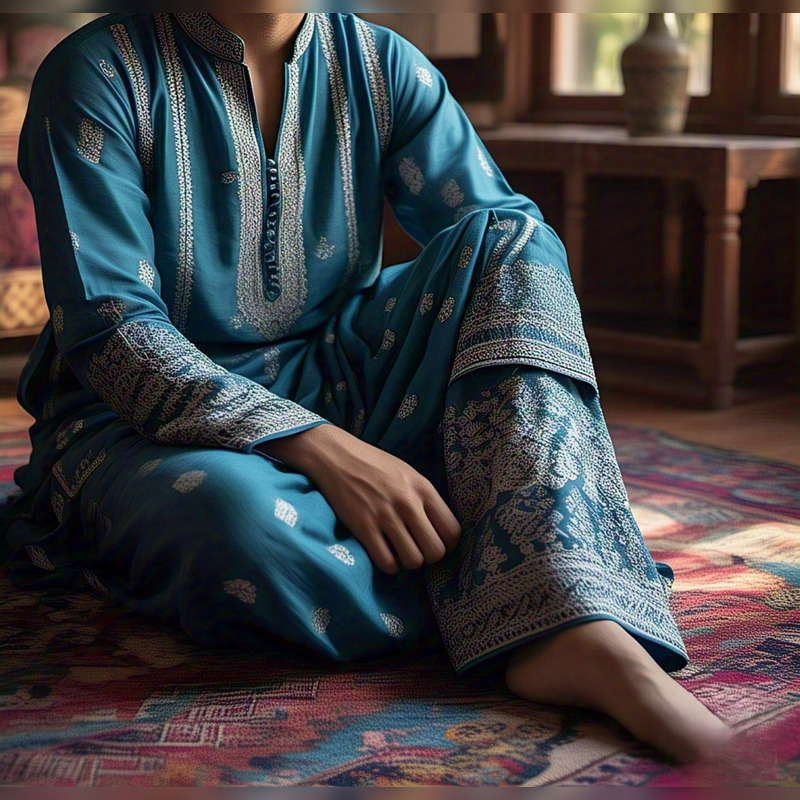 Farshi Shalwar - Modern Revival & Styling
Farshi Shalwar - Modern Revival & Styling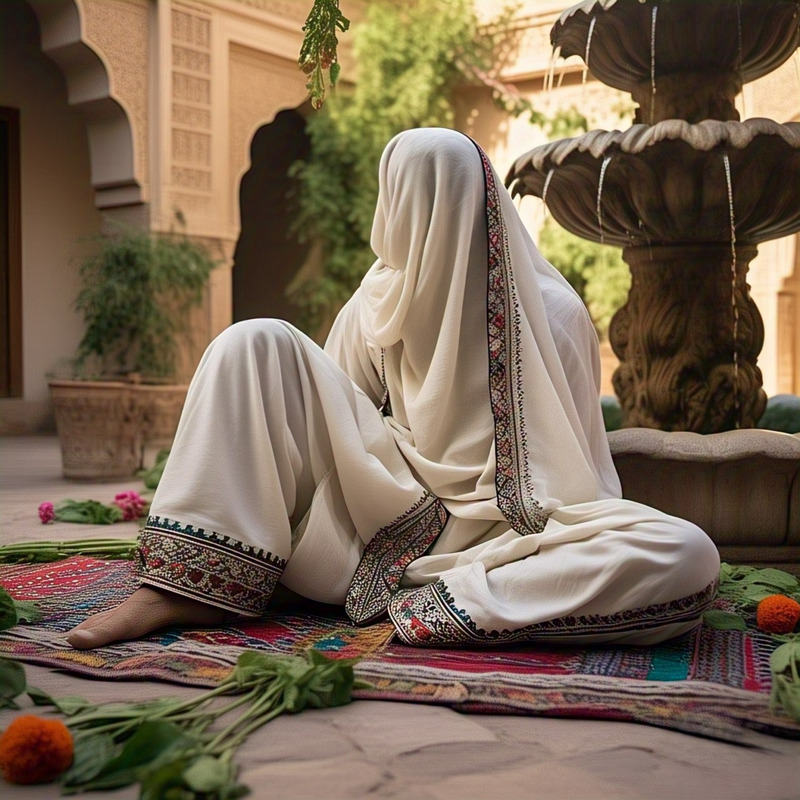 Farshi Shalwar - Modern Revival & Styling
Farshi Shalwar - Modern Revival & Styling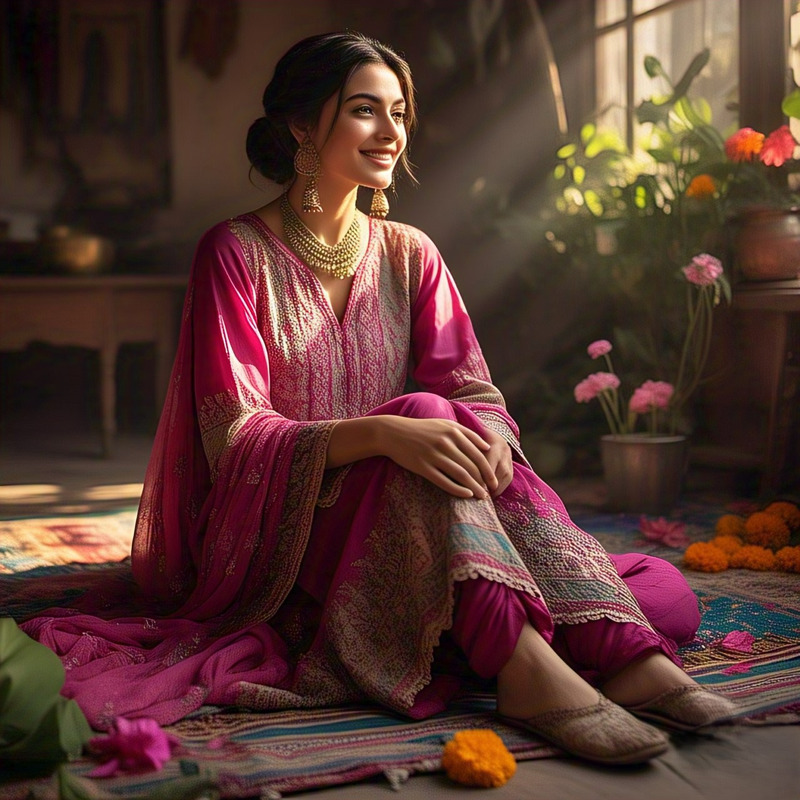 Farshi Shalwar - Modern Revival & Styling
Farshi Shalwar - Modern Revival & StylingWhat is a Farshi Shalwar? Conclusion: A Timeless Symbol of Elegance
The Farshi Shalwar stands as a unique piece of South Asian heritage—a garment that blends grace, history, and craftsmanship. Whether worn in a historical or modern context, it remains a symbol of tradition and elegance.
This traditional attire, once an icon of royal wardrobes, continues to captivate those who appreciate heritage fashion and timeless beauty.
- Home ›
- Products and Trades ›
- What is Farshi Shalwar?
